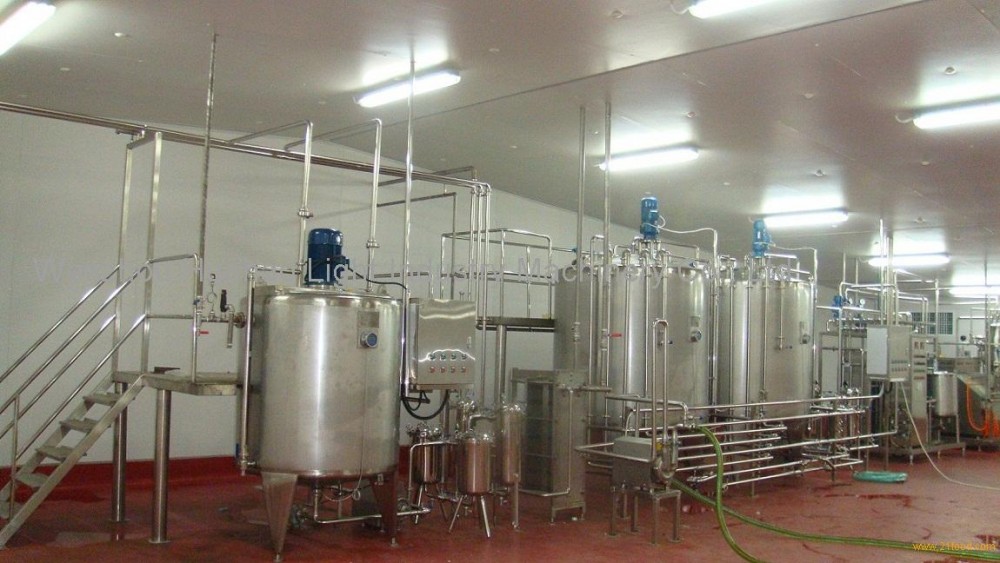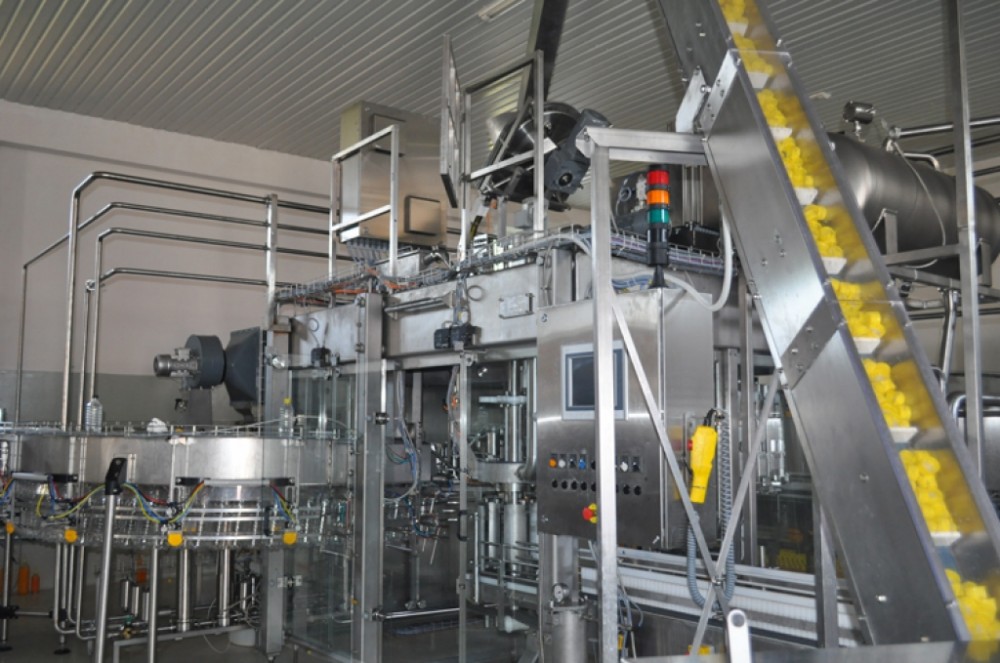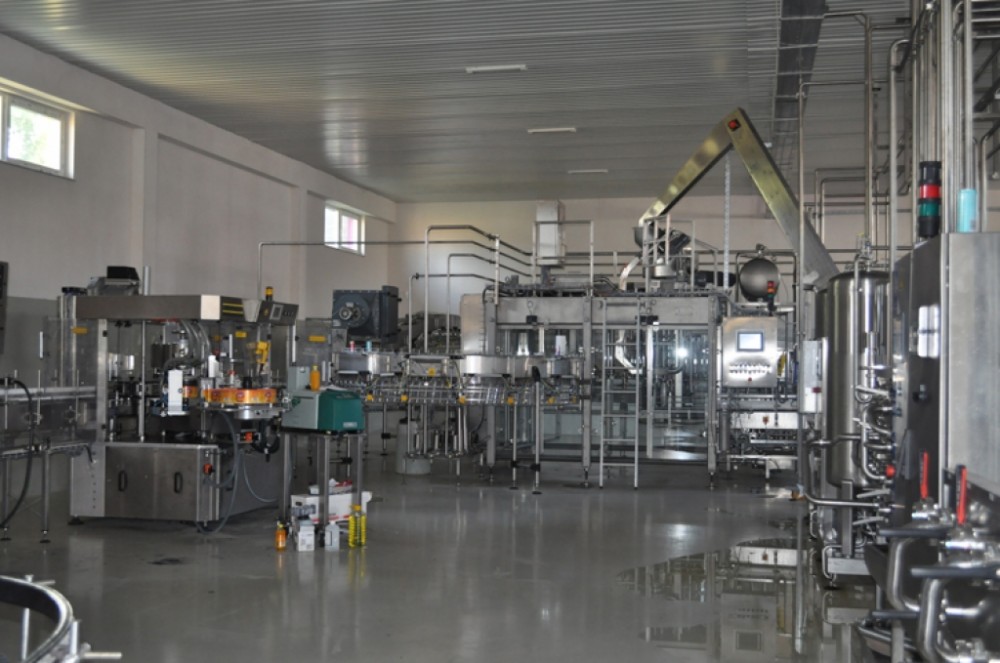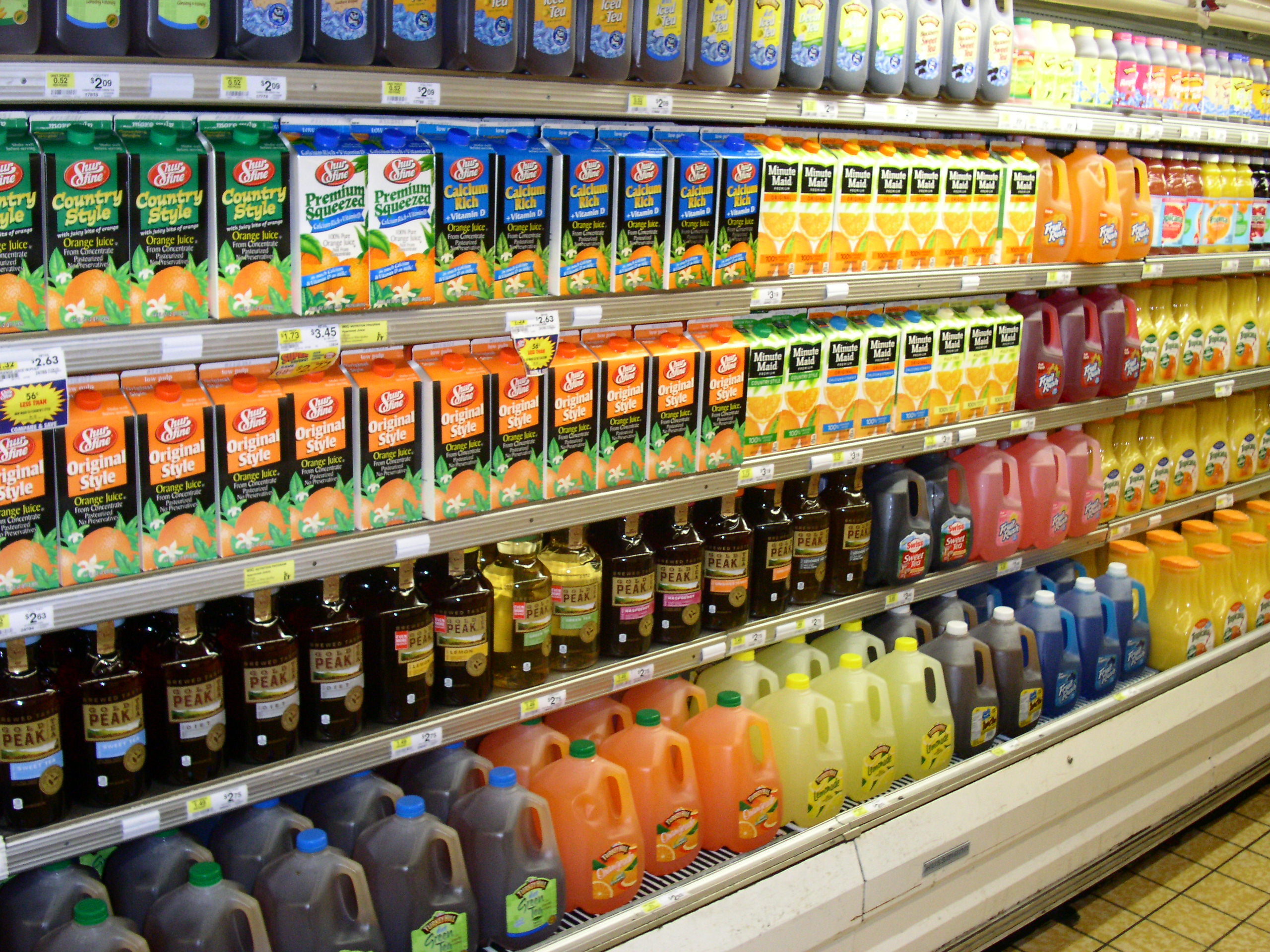Fruit juice production business in Nigeria is liken to Sachet pure water production business, you can’t go wrong with it. The reason being that Nigeria is one of the highest consumers of fruit juice in the world coupled with being the biggest market in the African continent. A very good investment in fruit juice production in Nigeria will yield threefold of returns on investment within a short period of time.
50% of the more than 150 million population consume fruit juice on daily basis. No wonder companies like Chivita, Coca Cola, UAC, Leventis Foods, and others have been thriving in the business and making billions of dollars unannounced. Government ban on importation of foreign made fruit juice into Nigeria has further doubled the profit potential in fruit juice production business in Nigeria.
La Casera was sold for N40 before the ban on importation of canned fruit juice into Nigeria, the moment the ban went in place, the price of La Casera went skywards from N40 to N70. Now La Casera is sold for N100 as the retail price. I gathered from reliable sources that it take about N35 to produce and distribute a bottle of La Casera to the end consumer.
That means they have been a sharing of N65 profit per bottle between La Casera company and its distributors and retailers over the years. And this is just ordinary carbonated drink. Quality fruit juice is far more desirable and far more valuable than carbonated or energy drink and yield more profit on investment.
What Is Needed In Canned Or Bottled Fruit Juice Production
The fruit juice production is capital intensive but worth every penny of your investment. The good news is that there is still provision to start small and explore new frontier. Farmed fruits such as Pawpaw are not yet being commercially processed into fruit juice in Nigeria, leading to the wastage of this valuable and nutrition farm produce. This could be a new business opportunity for any entrepreneur who wish to invest in fruit juice production in Nigeria to bring new value.
Pick up the type of fruit juice you want to produce. It could be a Pawpaw base fruit juice as I mentioned above. You may choose every fruit juice drink or carbonated drink similar to La Casera. Anything quality will do for Nigeria, we just love drinks – simple but quality soft drinks.
Your business plan should focus on the aspect or type of fruit juice you have chosen to produce. Make your business plan as detailed and thorough as possible especially if you are going to present it to financiers. Include comprehensive details about the type of fruit juice you want to produce; three-year operating expenses; three-year profit projections; marketing and public relations strategies; analysis of competing fruit juice manufacturers; information about potential vendors and selling avenues.
Like I said earlier, I would recommend you go for flavors that are not very common in the Nigerian market yet. A completely different variety of fruit juice will give you added advantage and win new customers for your brand with such an incentive to patronize your product.
NAFDAC Approval is very important, you need to have this before engaging in the commercial production of any food, drugs, and beverages. Approach NAFDAC after you have successfully setup your fruit juice production plant, produce few bottles and take it to them for final approval. You must begin this process well ahead of time.
Required Machinery For Fruit Juice Production
What really is a fruit juice? A fruit juice can be described as suspension of water, sugars (manly: glucose – fructose – sucrose), acids, essences, vitamins, proteins, minerals, pigments and pectic-substances. So its not just the squeezed fruit directly into a bottle, it has to go through the process of extractions, mixing, preparation, bottling, and packaging. Below are some of the machines needed for fruit juice production.

Fruit Juice Production Line – Water Treatment System
|
Raw water -> raw water tank -> raw water high pressure pump->multi- medium filter (Quartz sand filter) -> active carbon filter-> sodium ion exchanger-> water pump-> precision filter -> RO device ->ozone device ->pure water tank |
|
Remark: Supply water for juice blending tank and washing-filling-capping units |

Fruit Juice Production Line – Juice Preparation Treatment system
Sugar melting tank -> sugar filter -> Juice blending tank ->juice homogenizer ->vacuum De-aerater -> storage tank->UHT ultrahigh temperature instant Sterilizer-> heating and cooling tank.

Complete Fruit Juice Hot Filling And Packing Production Line
Bottle mould blowing machine -> bottle unscrambler-> air conveyor -> auto washing-bottling -capping units ( monobloc 3-in-1 machine) -> inverted bottle sterilizer->bottle cooling machine ->jet printer-> auto hot shrink labeling machine -> hot shrink label tunnel-> bottles plastic shrink packing machine bottle dryer->jet printer-> auto hot shrink labeling machine -> hot shrink label tunnel->auto film shrink wrapping packager-> stacker by worker.
The sample machine above should give idea of what is required to setup a fruit juice production plant. Its really capital demanding but you can start small as I mentioned earlier even though nothing is small in this business.
Read below some expert information on the production process of fruits and fruit juice.
The Most Common Semi – Finished Products
- Puree’ single strength or concentrate
- Cloudy or pulpy juices single strength or concentrate (which contain insoluble solid particles)
- Clear juice single strength or concentrate (without the insoluble substances)
The technological cycle has to be developed in order to preserve as much as possible the organoleptic properties, the colour and aromas of the fresh fruit juice. So especially the thermal treatments, which are necessary either to get a god yield in some steps of the process, or to have microbial stability, must be carefully evaluated just to avoid browning phenomena and vitamins and proteins degradation. This treatment varies depending on the fruit PH. The presence of organic acids such as citric, malic, and tartaric acid, depending on the kind of fruit, is responsible for the low PH value (1,5-4,5). The thermal cycle is always a combination of temperature value and holding time.
The contact with the air can be dangerous for fruits sensitive to oxidation, so, in some cases, it could be necessary to carry out some steps of the process in controlled atmosphere or provide deaeration system before the product packaging.
Pectic Substances Are Also Very Important
For cloudy fruit juices or fruit puree it is essential that the original content of pectins be retained throughout the production. In this case fruit enzymes must be inactivated during processing as soon as possible by heating process.
For clear, filtered fruit juices a breakdown of pectins is needed to enable a good yield and high degree of juice concentration, and this is done by adding specific pectolytic enzymes which hydrolise the pectic substances.
To obtain clear fruit juice the enzymation is not the only steps required, but after that other phases such us sedimentation with fining agents (gelatin – bentonite.), and filtration (by vacuum and ultrafiltration) are required.
As we said above all the semi-finished product can be single strength or concentrated.
With the evaporation process, taking out part of the water from the fruit, the juice concentrates can be considered as concentrated sugar-acid solution. Considering this and the low PH of the fruit juice the puree and juices concentrates are not a suitable substrates for bacteria potentially dangerous for human health.
Basically There Two System For The Fruit Juice Concentration
The puree and pulpy juices are concentrated by a forced circulation evaporators where the product is forced by appropriate centrifugal circulation pumps to go through tubular heat exchangers to be heated in order to release in a evaporation chamber the water vapors.
The evaporator is a under vacuum multiple effect system where the vapors generated in one effect are used in the next one the heath the product and making new vapors, this happen starting from the highest temperature allowed for the product going towards the lowest which is normally around 42-45°C. The system has also the advantage of a considerable reduction of the live steam consumption.
For clear juice the evaporator is always a multiple effect but the so called “falling film type” where the product flow rapidly in a thin film along the wall of vertical heat exchanger heated in the shell by the vapors coming from the previous effect. The advantage is that the heating is very quick and the residence time in the evaporator is shorter than the one in the forced circulation type, so that there is a better preserving of the product quality.
Connected with the evaporation process there is the possibility of retaining the fruit volatile aromas which otherwise would be lost in the condensed water.
Only juice coming from fresh, not rotten fruit will give a good aroma concentrate. If rotten fruits are used the amount of ethanol in aroma will rapidly increase with consequent degradation of the quality.
To obtain the aromas, the secondary condensates are recovered from the evaporator and sent to the aroma recovery plant.
This plant consists of two main parts: The boiler where the condensates coming from the evaporator are heated to produce vapors , and the fractioning column which split the vapors in aroma concentrate and a poor in aroma stripped liquor. The system concentrates the aroma in a ratio of 1:150—1:200 compared to the feed of condensates. The aroma storage has to be arranged at low temperature.
The storage of the semi-finished fruits products can be done in bag in box of 200 litres volume by the following procedure:
The product is sterilized before packaging by a tube in tube heater for puree, and pulpy products or plate heat exchanger in case of clear or cloudy juices providing that the fibers content is below 5%.
The heating is done via superheated water instead of direct live steam to avoid thermal stress. The tube in tube technology provides uniform and reasonably quick heating because the product flows in a thick film allowing the thermal exchange on “two sides”.
After cooling the sterilized product is sent to a dedicated filler at one or two filling heads depending from the needed output to fill in multiple layer bags in a controlled atmosphere of live steam to avoid any contamination from the ambient.
The fruit juice production process obviously depends on the raw materials and the required final product. employ team of experts in fruit juice production and machine installation. Scientist and nutritionists. Get as much tutorials as you can. This is a big and serious business and should be handled as such.





Dear sir
I want to start the line for making custard can you please assist me source these machines as soon as possible my whatsapp
I am a distributor with a Chinese company that manufactures foods and fruits processing machines, filling and capping machines, brand label machines, etc.
you can contact me on.
Good day. My name is Mrs Gimba, I am interested in starting a small scale Mango/Pineapple juice processing company. can I have some idea on the necessary machines needed? A machine that will produce 500-1000 liters per day.
Thank you for your anticipated quick response.
Gimba
Good day gimbal my name is abdi from somalia
I want to start juicing companies this year to come
I want to know what is good to use and what is best to buy juice machine china or, please my African brother if you can help idea.
my post
abdikariim119@gmail.com
How much does the fruit juice production machines cost?
have you got an answer
i will like to start a fruit juice/bottle water production. can you send me estimate & best company to supply/install equipment. thanks
Dear Sir
I will appreciate if you can recommend suppliers of machinery for pineapple juice processing for bottling or packaging
please can you recommend a supplier of blocks making machine thanks
Nice article but the problem is this machines will be very expensive to afford by a fresh graduate who is willing to venture to this business
I am a supplier and manufacturer of plastic bottles, which can be used for fruit juices and mineral water. I am looking to supply in this industry. Any assistances
Hi Mosana, Pls contact me Betino Uk
Thanks Mosana. Do manufacture bottles for pure water too?
Please i want to go into dispense juice production cos in Nigeria ,we only have dispense water but i will want to start the fruit production and sugar wont be added just fruit fruits with water to mix.
Please like how much will i need and also how can i go about it.
thank you
am new, just have interest to start. need help from the primary stage
Please, Can you recommend a company to get these production line machines from.? Thanks
I want to start Packeged Drinking Wster, Fruit Juice and Ground Nut Oil Bussiness in nigeria.At first I know about secourity of myself and my business in nigeria.Capital share and system of the business. Before starting I want a tour in nigera for getting observations. So give me a plan accordimg to my perposal.
Satish, you can contact me for this.
I have just completed a mini factory for fruit juice production. I will need an expert to guide to guide me. How can I get one. Thanks
please contact me
Monasa, can u pls contact me. I need pet bottles for my juice production. And tetra packs
You can start with natural fruit juice and grow, i started in my house with PET bottles, that i cap myself, i am just looking to scale mine now.
The west and north are the highest consumers of sweetened juice. So u are good to go
Am really interested in this business but I need to start small without those heavy machine because i don’t have the money to buy them now so how can I start with small business plan. Pls I need your advice thanks
I need investors or partners to join me in juice production, i already have about 4-5 different flavours of fruit juices that i supply on a small scale, my customers cant get enough of it, but i am looking to scale the business to a larger market. I do pineapple, watermelon,mango, and two mixed fruits. (these are natural fruit juices)
If interested or know someone that might be please contact me.
07031515039
I need someone that can write a Business Plan on Fruit Processing
Good day,
I want to venture into fruit juice production (different flavour) on a small/medium scale level,
Please, I need help on the materials to start with (machine for small scale production, the additives, packaging containers etc), where to get them, and the capital I need on standby to start the business.
Thanks.
I want to start fruit juice business
But on a small scale because i don’t hv money to buy those big machine for now
Pls which small machine can i use to extract the juice an hw do i go about it
Pls advise me
I would like to have the cost implication. Of a fully automated process
Thanks
how much Will it take someone to start the business, where can I source for locally made machines
Please may I know how much I will need to start fruit juice processing on a small scale @ this present time. Particularly the cost of the machines. Thank you.
Dear ,
i want to start a medium scale orange juice proceeding plan in Benue state , Nigeria, Please help me with the total cost estimate of applicable machinery
dear me okoye innocent, you can contact me on this line for info on your question
Thanks a lot, admin for this detailed post. I really appreciate your effort. you can also read here on how to start a fruit business
I am a food scientist and i will really love to work with any company that needs my assistance
Am interested on the fruit juice making machines. I need both the machines and the packaging machines both I don’t the money to buy the large machines, I want to start with machines suitable for small scale production. Pls I need ur advice on this. ..
I want to invest on fruit juice making business but I cannot afford to buy those heavy and expensive machines now. I need machines that would be suitable for small scale fruit juice making. Not just that, I also need a machine for packaging the products. Pls advice me
That’s quite good advices here, but I really do not understand why do you think it’s achievable for any average person here or something like that ? That’s very costly business associated with production, etc which really need some serious money.
plz to start a fresh fruit business, does it require any qualifications like studying or been been a nutritionist or any related course??
Or is it something anyone can do??
Good day my name is Abdi from Somalia
I want to start juicing companies this year to come
I want to know what is good to use and what is best to buy juice machine china or, please my African brother if you can help idea or
where can i buy like this juice machine
mail abdikariim119@gmail.com
Good day everyone
Pls, I want to venture into fruit juice production (different flavour) on a small/medium scale level,
Please, I need help on the materials to start with (machine for small scale production, the additives, packaging containers etc), where to get them, and the capital I will need to start the business.
Thanks you